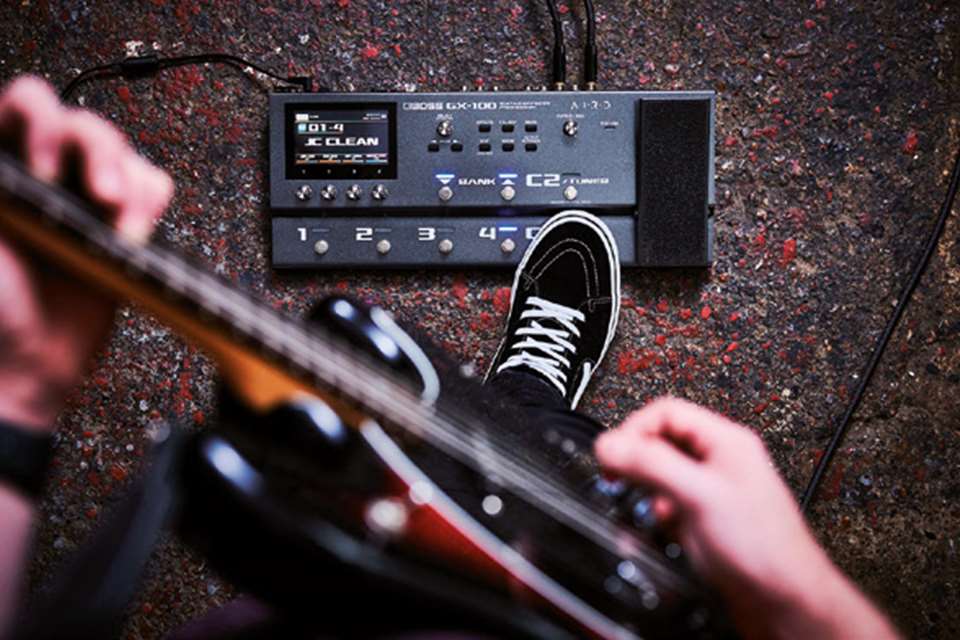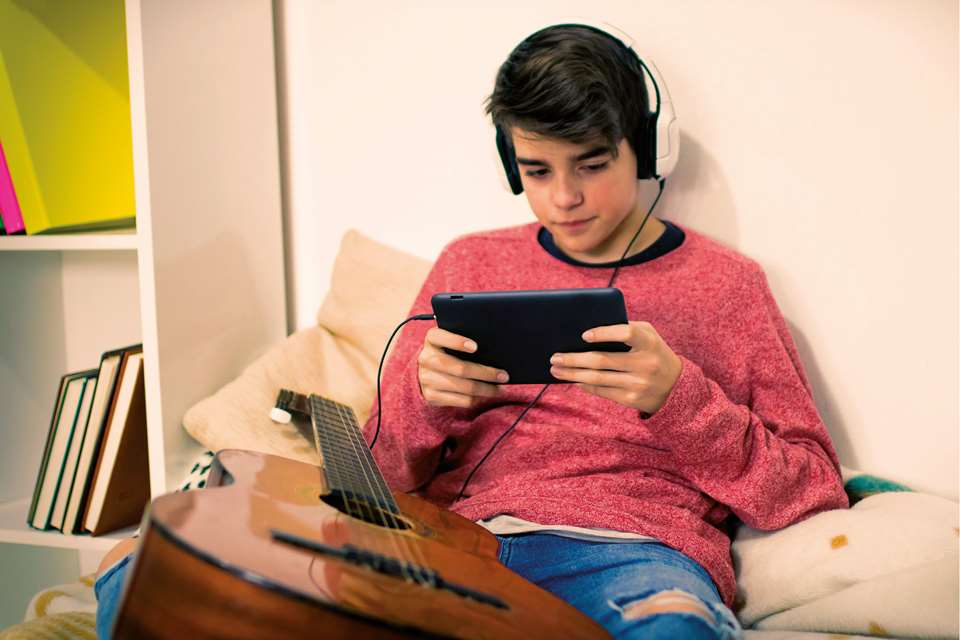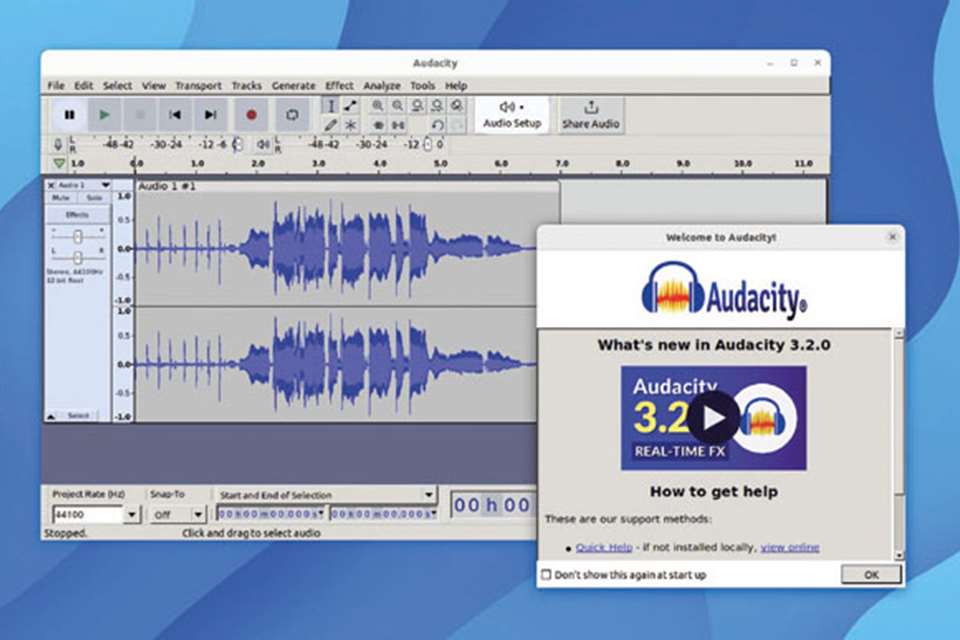Tech Reviews: Orba 2
Dale Wills
Wednesday, February 1, 2023
Dale Wills takes a look at the Orba 2 from Artiphon.

Courtesy Artiphon
There is an air of mystery around early years music technology. While older learners benefit from DAWs, DJ controllers, outboard samplers, microphones and a range of other toys designed to facilitate music-making, there just isn't an equivalent for younger learners.
Access to making music with technology is something most learners experience only later in their musical journey, on account of cost, the delicacy of the equipment, the perceived complexity, or the pedagogical notion that musicians begin their journey on an acoustic instrument.
As both an acoustic and electronic musician, I have a certain sympathy with these concerns. I have quailed at the sight of over-enthusiastic fingers dancing around my mixing desk, and nodded politely at the cacophony of Level 2 attempts to combine different loops without an understanding of harmony (or even, sometimes, key!). On the flip side, in a world of budget cuts, squeezed timetables and the drive towards differentiated learning, the incorporation of technology can be an effective and efficient way to introduce young learners to the possibilities of music-making without the prohibitive barrier of the technical requirements of an acoustic approach.
A new approach
The Orba 2 from Artiphon is one of a range of alternative musical interfaces aimed at providing new approaches to the creative process. The device is a mini synthesizer, sample player, looper, groove box and MIDI controller all combined into one palm-sized half-sphere orb. The original unit was released in April 2020, following a Kickstarter campaign. The latest update, announced at NAMM 2022, features an improved interface, new features, bug fixes and the promise of improved compatibility.
The key bed radiates out in segments from the central home pad, allowing the user to trigger sounds in a particular group from one of the eight keys. Hitting the home pad allows the user to cycle between the various sample libraries. So far, so intuitive. A small selection of basic sound packs are preloaded onto the device; you get a variety of drum, synthesizer, and string sounds to play with. You can tweak the sound offerings by connecting the Orba 2 to a computer or phone either via Bluetooth or by using a USB-C cable.
Features
The keys have a certain amount of touch sensitivity; running the finger forward and back on the synth chord patch, for instance, controls the cut-off filter. On the synth lead, the gesture produces a vibrato effect. The unit also features an impressive velocity sensitivity, producing at least 10 different volumes on my initial experiment. Changing the orientation of the unit also triggers various modulations, making the playing experience much more immersive and musically intuitive. In all, the Orba 2 supports nine gestures, including shake, spin and the slightly scary bump! This experience is backed up with a satisfying haptic feedback, much like a phone giving off that reassuring vibrate ‘kick’.
The unit functions as either a controller for external software or comes fully loaded to operate as a self-standing unit straight out of the box. Powered by Artiphon's synthesis engine, the Orba 2's sequencing capabilities are more than enough to build up some surprisingly sophisticated beats, just utilising the unit in standalone mode.
Positives and drawbacks
The first step in the Orba 2's creative journey is to input a tempo by holding down the home pad and tapping on the ‘BPM’ segment. The unit then provides a metronome click to record multiple lines against. The intuitive UX starts recording only when you begin playing, avoiding the need to rush around and re-record dud takes. The inbuilt memory supports up to 128 bars of sequencing, which is an impressive platform for expressing and developing creativity.
The recording is automatically quantized, moving any slightly wonky notes directly on to the beat. This is particularly useful given the slightly different response times of various samples and patches (not to mention my already slightly inaccurate playing!). The quantization feature is either on or off, with an option for ‘Orba groove’, which seems to be a quantization map based on the first line laid down. It would be nice to see at least options for 8-, 4- and possibly 2-quantization rather than the blanket on or off, but given the range of functionality on offer, that seems a small quibble.
Wiping recordings is also a slightly tedious process: holding down the home cell and ‘recording over’ the erroneous take. In balance, the unit is mercifully free of any additional or hidden buttons or knobs which might overcomplicate the design, and the interface and design are remarkably intuitive for users who expect to be able to utilise a new product without a substantial learning period.
Multi-functionality
In order to further support functionality, the Orba 2 comes with an iPhone or Android companion app, together with slightly more grown-up desktop equivalents. The app pairs with the unit via Bluetooth, and allows a vast additional sample library to be controlled. Other additional functionality includes the ability to key map samples, add new tunings, and upload additional samples and sounds. I experienced some connectivity issues in Bluetooth mode, although given the size and complexity of the data being moved back and forth, this is hardly surprising. The result with a cabled connection was much more effective, with only minor latency issues.
The sound quality which the unit produces from its built-in speakers is impressively clear and bright, even with some of the more complex, distorted synth sounds. The unit also offers the facility to route sound elsewhere via a headphone jack. While this is ideal for individual work, the ability to connect to a Bluetooth speaker would be a great addition to this little orb.
The whole haptic interface approach, together with the beautifully recessed LED indicators on each of the segments, gives more of an air of a games controller than a sophisticated musical instrument; but the results that can be achieved are surprisingly effective. The feel of the unit is sturdy and reliable, and obviously designed to stand up to a certain amount of abuse, unlike comparable MIDI controllers.
The unit does not allow users to export creations made on the standalone device as individual tracks or as MIDI data, which can make it difficult to transfer tracks into a DAW or other platform which would allow you to develop ideas further. Artiphon has recently added the ability to save tracks, but the files are stored on the device and in the app. Exporting the material for use elsewhere is a slightly more convoluted process.
Put to the test
The Orba 2 does function as a MIDI controller for DAWs. In the interests of experimentation, I hooked the unit up to Logic Pro, Albeton Live and Pro Tools. Mapping the controller to Ableton was a fairly straightforward process, although Logic and Pro Tools took more persuasion. The unit functions as a particularly effective DJ controller, running effects parameters and filters in a gratifyingly successful way. As an input controller, the functionality was more limited, although it does make a fun alternative to the standard chess-board sample pad for programming drums.
The experience of playing with the Orba 2 has been ultimately refreshing. The unit has obviously been designed with the digital content generation in mind; the interface is intuitive, well designed and, with a learning curve of only a few minutes, allows users to start producing impressive results.
Ergonomically, the unit fits into even a small palm, although either grasping the orb in both hands (and using thumbs) or leaving it on a tabletop and approaching it with a sample pad/keyboard technique produced more musically satisfying results.
Price
At around £140, the Orba 2 is unlikely to become a one-unit-per-learning solution to delivering music technology to a class. But the unit does offer an engaging and thought-provoking alternative to comparable MIDI controllers. The functionality lends itself particularly well to early years learning, and instinctively embeds concepts such as tempo, key, form, and function in a systematic way which is approachable to young learners. The Orba 2 could easily form the basis for a writing project with a carousel of scaffolded activities; lyric writing, melody writing, which would introduce learners to the theoretical concepts underpinning music – from an applied standpoint.
The Orba 2 represents one of a new generation of music technology products which substantially rethinks our slightly reverential approach to this subject area. Anything which demystifies this approach to music making and gets young musicians engaged is a winner. Despite some of the technical bugs that Artiphon are working through, this remains a powerful and exciting tool to give early years learners their first taste of the commercial world of music.
Find a helpful glossary of terms used in our music tech reviews here.







